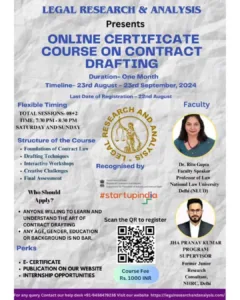
Karnataka HC highlights the importance of Cross-Examination in the case; Kattemane Ganesha v. State of Karnataka

Cross-Examination and the landmark judgment: Kattemane Ganesha v. State of Karnataka
Kattemane Ganesha, a murder defendant, and the victim in the same case both filed appeals, which were accepted by a division bench of Justices B Veerappa and Rajesh Rai K. The victim had contested the co-acquittal accused’s while Ganesha had disputed the judgement convicting him in the murder case.
After hearing from the attorneys for the parties in both cases and strictly following the law, the bench remanded the cases back to the trial court for new orders to be made within a three-month period based on the testimony of witnesses who had already been examined in chief and during cross-examination.
Section 137 of the Indian Evidence Act does not define ‘examine’ to mean and include the three kinds of examination of a witness; It simply defines ‘examination-in-chief, ‘cross-examination’ and ‘re-examination’. Appreciation of evidence includes consideration of the examination-in-chief as well as cross-examination,” said the court.
The court made it clear that the Sessions Judge may not allow any of the parties to lead evidence and may only proceed using the evidence that is already on file.

The defence attorney for the convicted person argued that the cross-examination section of the prosecution witnesses’ testimony should have been taken into consideration and reviewed by the Sessions Judge, which would have rendered the entire verdict invalid.
The bench noted that the trial court had remarked in its ruling that it found “no worth mentioning points elicited to undermine the evidence this witness” while taking into account the cross-examination of the first prosecution witness. The division bench noted that the trial court had made the same observation regarding the other witnesses.
“The provision of cross-examination is not merely a technical rule of evidence; it is a rule of essential justice. It serves to prevent surprise at the trial and miscarriage of justice because it gives notice to the other side of the actual case that is going to be made when the turn of the party, on whose behalf the cross-examination is being made, comes to give and lead evidence by producing witnesses. The party must be given a fair chance to cross-examine the witness,” said the court.
The bench stated that the primary goal of cross-examination is to ascertain the truth and identify fabrications in witness testimony.
“It is designed either to destroy or weaken the force of the evidence of a witness who has already given evidence in person or to elicit something in favour of the party which he has not stated or to discredit him by showing from his past history and present demeanour that he is unworthy of credit. It is the most efficacious test to discover the truth,” said the court.
“Sometimes cross-examination assumes unnecessary length, then the Court has the power to control it. The Court must also ensure that the cross-examination is not made a means of harassment or causing humiliation to the victim of crime.”
Cross-examination is a key component of any trial or proceedings and the topic is given substantial attention during courses on trial advocacy. The opinions of a jury or judge are often changed if cross examination casts doubt on the witness. On the other hand, a credible witness may reinforce the substance of their original statements and enhance the judge’s or jury’s belief. Though the closing argument is often considered the deciding moment of any trial, effective cross-examination wins trials.
Accepting the appeals, the bench ruled that the Sessions Court had erred by rejecting the prosecution witnesses’ cross-examination in reaching its decision and that this had led to a miscarriage of justice.
The matter got remanded to the Trial court.





